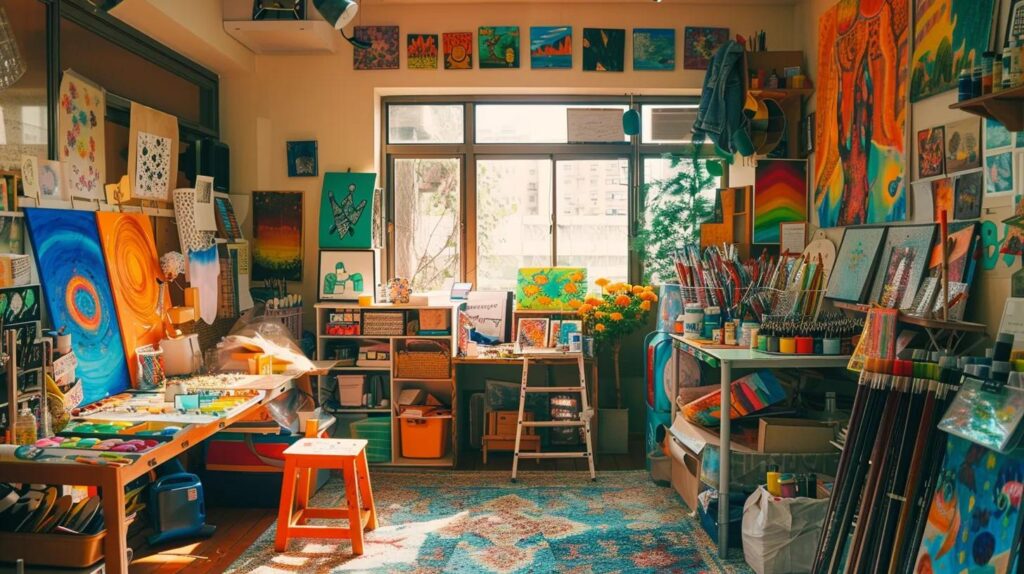
Coloring as a Solution for Reducing Anxiety
Coloring has emerged as a popular and effective way to manage anxiety in today’s fast-paced world. Many individuals use coloring both as a creative outlet and a form of therapy, often engaging with adult coloring pages to enhance relaxation. This article explores how coloring calms anxiety, reviews scientific support for its benefits, and offers guidance on incorporating coloring into daily routines.
Key Takeaways
- Coloring channels anxious energy into creative expression.
- Studies indicate coloring can positively affect mood by engaging natural stress relief pathways.
- Practical strategies include creating a calming space, choosing suitable materials, and using coloring regularly to enhance focus and relaxation.
Understanding How Coloring Calms Anxiety
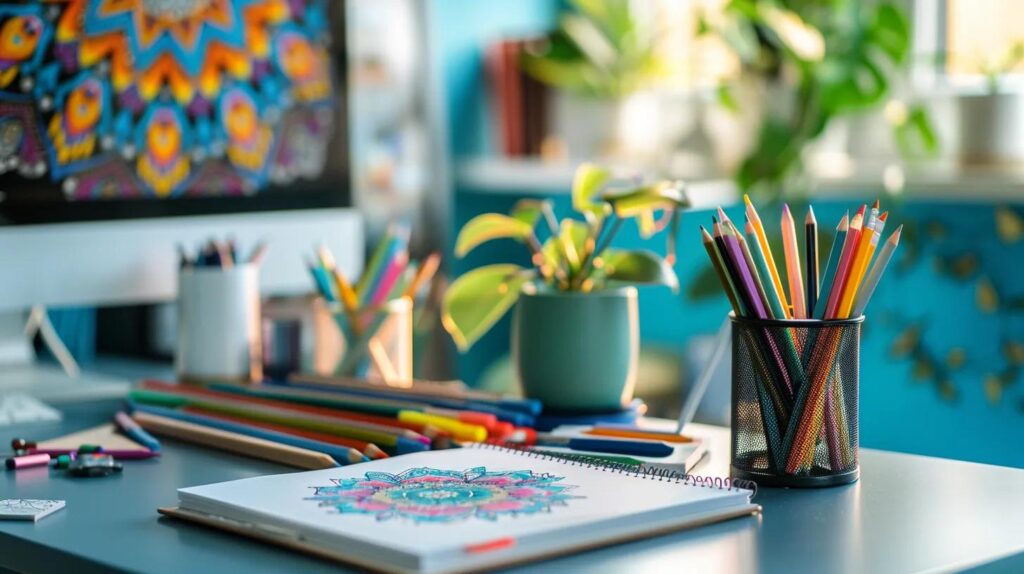
Coloring calms anxiety by engaging the mind in a focused, repetitive activity that distracts from anxious thoughts. The act of choosing colors and filling in patterns shifts attention away from worry and creates a meditative state. The rhythmic process reinforces feelings of order and balance.
The Psychological Mechanisms of Coloring for Anxiety Relief
Through structured creativity, coloring activates brain reward pathways and stimulates dopamine release, which helps interrupt repetitive anxious thoughts and improves mood.
How Focusing on Coloring Diverts Anxious Thoughts
By demanding attention to details such as shade gradients and line precision, coloring minimizes the tendency for the mind to wander into negative patterns, offering a temporary mental break.
The Meditative Qualities of Repetitive Coloring Actions
The steady motion of tracing lines and filling areas mimics meditation practices, promoting deep relaxation and calming the mind.
Neurological Impacts of Coloring on the Brain's Anxiety Centers
Engaging in coloring has been shown to lower activity in the amygdala, the brain region associated with fear responses. This reduction in neural hyperactivity may help adjust long-term stress responses.
Comparing Coloring to Other Mindfulness Practices for Anxiety
Unlike meditation or yoga, which often require mental stillness or physical effort, coloring provides an accessible and active form of mindfulness that combines creativity with relaxation.
Scientific Support for Coloring as an Anxiety Reducer
Research supports coloring as a useful therapeutic tool for reducing anxiety. Studies have observed lower stress markers and enhanced psychological resilience in individuals who color regularly.
Overview of Research on Coloring and Anxiety Levels
Short coloring sessions have been linked to decreases in perceived stress, heart rate, and cortisol levels, suggesting a quick onset of calming benefits.
Studies Demonstrating Mood Improvement Through Coloring
Investigations reveal that coloring mandala patterns and familiar designs can elevate mood and ease anxiety, likely because these patterns provide a predictable and soothing visual experience.
How Specific Designs Like Mandalas Affect Anxiety
The structured, symmetrical nature of mandalas seems to resonate with the brain’s need for order, promoting calmness by reducing cognitive overload.
The Link Between Coloring, Mindfulness, and Lowered Anxiety
Engaging in coloring promotes mindfulness by encouraging individuals to remain present in the task, a state associated with reduced anxiety and depression.
Physiological Changes Observed During Coloring for Anxiety
Periodic coloring is associated with measurable physiological changes such as reduced blood pressure and slower heart rates, reinforcing its role in stress management.
Practical Ways Coloring Reduces Anxiety Symptoms
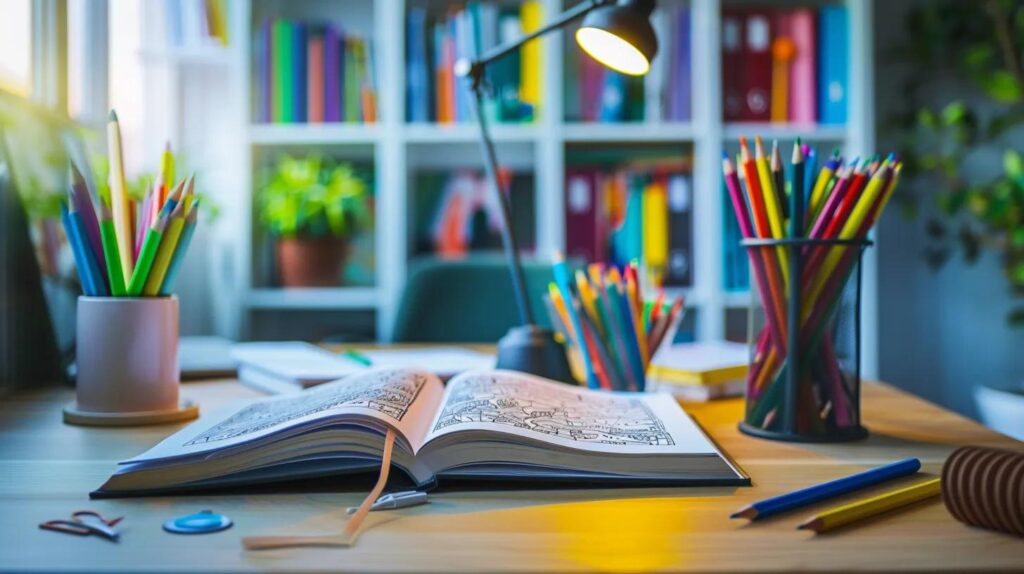
Coloring can be a practical tool to alleviate anxiety symptoms when integrated into daily routines. It helps manage various anxiety disorders and contributes to overall mental wellbeing.
Using Coloring to Manage Symptoms of Generalized Anxiety Disorder
For those with generalized anxiety, coloring offers a structured activity that lessens cognitive overload by focusing on color selection and design details.
Coloring as a Technique to Alleviate Social Anxiety
In socially stressful situations, coloring serves as a safe retreat that allows for personal time-out and reinforces self-care, making group or individual sessions beneficial.
How Coloring Promotes Relaxation and Better Sleep
Engaging in coloring before bed helps signal the end of the day’s activity by inducing a relaxed state, which supports better sleep hygiene and reduces pre-sleep anxiety.
The Role of Coloring in Improving Focus and Concentration
Regular coloring practice aids concentration by training the brain to focus on detailed tasks, reducing susceptibility to distractions.
Coloring as a Healthy Distraction From Stressors
Serving as a positive distraction, coloring redirects attention from stressors and repetitive negative thoughts, helping stabilize emotional states.
Getting Started With Coloring for Anxiety Management
Beginning a coloring routine involves selecting quality tools and creating an environment conducive to relaxation.
Selecting Appropriate Coloring Books and Materials
Opt for high-quality coloring books featuring calming designs like mandalas or nature scenes, and use vibrant, non-toxic tools such as pencils, markers, or gel pens to enhance the experience.
Creating a Calm Environment for Your Coloring Practice
Set up a dedicated, distraction-minimized space with good lighting and minimal electronic interference, perhaps accompanied by soft instrumental music to further promote relaxation.
Simple Coloring Techniques to Begin Your Anxiety Relief Journey
Start with simple, repetitive designs to avoid decision fatigue. Techniques like shading and blending can ease beginners into the practice, gradually progressing to more complex patterns as comfort increases.
Integrating Coloring Into Your Daily Routine for Ongoing Anxiety Support
Designate a regular time—such as after work or before bedtime—for coloring sessions. A consistent routine helps reduce acute anxiety and contributes to maintaining overall mental balance.
What to Expect When Using Coloring as an Anxiety Solution
With regular practice, individuals often experience a gradual reduction in anxiety levels, improved mindfulness, and a greater sense of emotional control over time.
The Influence of Colors and Patterns on Anxiety Reduction
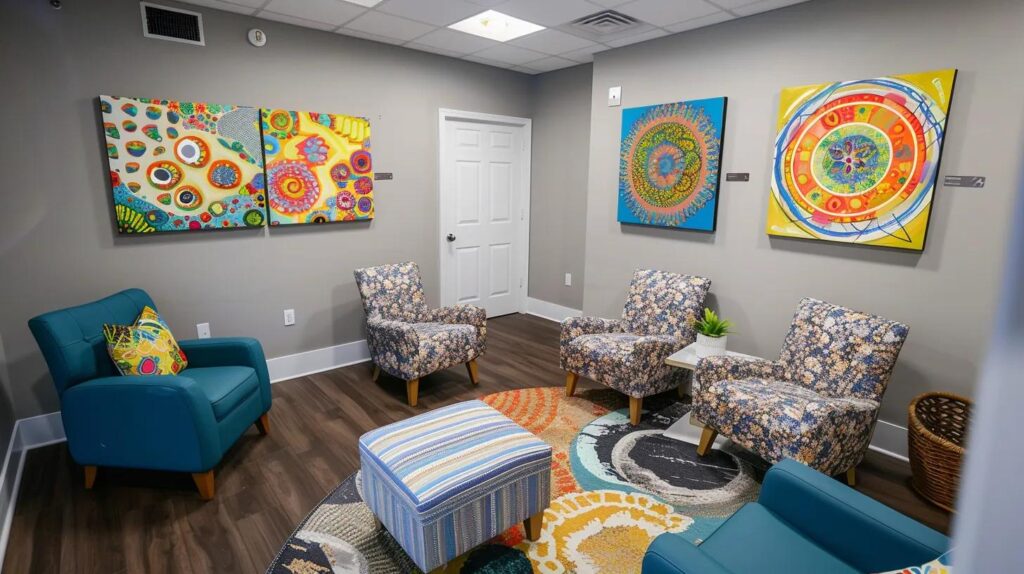
The choice of colors and patterns in coloring plays a central role in achieving therapeutic effects. Different colors and designs can evoke distinct emotional responses.
How Different Colors Can Impact Mood and Anxiety Levels
Cool colors like blue and green are typically associated with calm and serenity, while warm hues can provide comfort even if they stimulate slight energy initially. Such responses can help stabilize mood and reduce physical signs of stress.
The Significance of Patterns and Complexity in Anxiety Relief Coloring
Simple patterns generally promote relaxation by reducing cognitive load, whereas overly intricate designs may overwhelm. It is important to choose a balanced level of complexity that supports a calm mindset.
Choosing Designs That Promote Calmness and Serenity
Selecting images that naturally evoke calm—such as natural landscapes or abstract art with balanced symmetry—can facilitate a meditative state and support the desire for order and harmony.
Personalizing Your Coloring Experience for Maximum Anxiety Reduction
Personal elements like custom templates or favorite color palettes can enhance the calming effects by creating a deeper sense of ownership and engagement during the coloring process.
The Therapeutic Effect of Engaging With Symmetrical and Repetitive Designs
Symmetrical and repetitive designs offer soothing visual patterns that promote mindfulness and contribute to a stable, relaxed state of mind.
Beyond Coloring Books Creative Approaches to Alleviating Anxiety
Beyond traditional coloring books, there are other creative methods to manage anxiety that incorporate coloring principles.
Exploring Mindful Doodling for Anxiety Relief
Mindful doodling involves spontaneous, unstructured drawing that allows for free self-expression and can quickly relieve anxiety by letting thoughts flow onto paper.
Free-Form Drawing as a Method to Process Anxious Feelings
Unlike structured coloring, free-form drawing is liberating and helps individuals process complex emotions, providing a reflective exercise for managing stress.
Combining Coloring With Other Relaxation Techniques
Integrating coloring with mindfulness practices such as deep breathing can further enhance relaxation, as controlled breathing prepares the mind for focused, stress-reducing activity.
Digital Coloring Apps as an Alternative for Anxiety Reduction
Digital apps offer modern tools for anxiety management, providing features like color blending and customizable designs while maintaining the therapeutic benefits of traditional coloring.
When to Seek Professional Support if Coloring Is Not Sufficient for Anxiety
While coloring is effective for many, persistent or severe anxiety might require professional help. In such cases, combining coloring with therapies like cognitive behavioral therapy (CBT) can provide comprehensive support.
Table: Comparison of Coloring Techniques for Anxiety Reduction
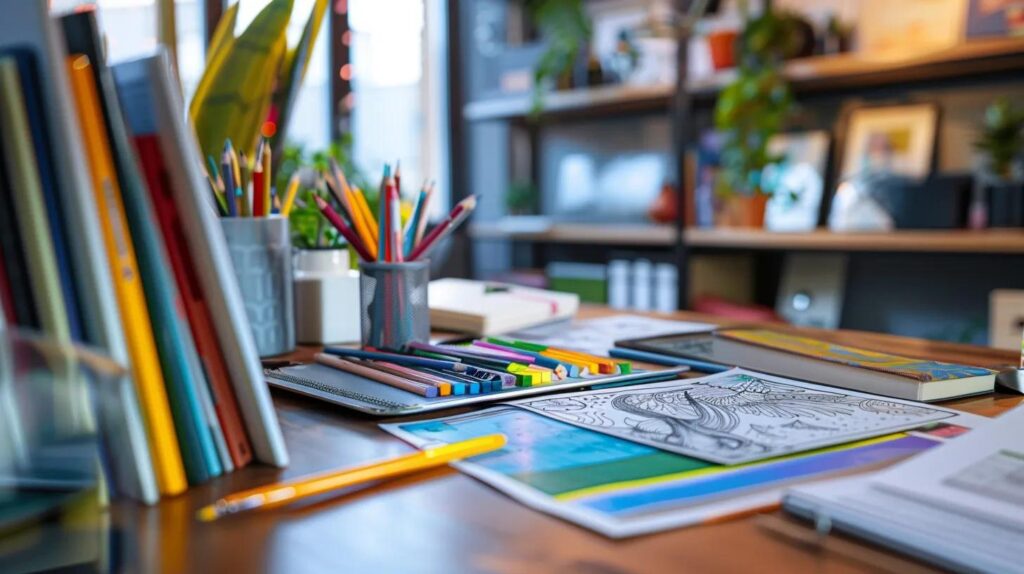
| Technique | Key Focus | Notable Benefit | Recommended Duration |
|---|---|---|---|
| Traditional Coloring Books | Structured patterns | Promotes mindfulness and reduces stress | 20-30 minutes per session |
| Mindful Doodling | Free-form expression | Enhances self-expression and emotional processing | 10-20 minutes per session |
| Digital Coloring Apps | Customizable designs | Offers flexibility and creative variety | 15-25 minutes per session |
Before adopting any technique, it is important to consider personal preferences and stress triggers. The table offers a brief summary to guide users in selecting the method that best fits their lifestyle and anxiety management needs.
Frequently Asked Questions
Q: How quickly can I expect to see anxiety reduction from coloring? A: Many users notice a calming effect after just one 20-30 minute session, though benefits tend to accumulate with regular practice.
Q: Do the benefits of coloring apply to digital formats as well? A: Yes, digital coloring apps engage users similarly by combining mindfulness with creative expression.
Q: Can coloring help with other mentalhealth issues besides anxiety? A: Coloring can support mood regulation, improve focus, and serve as a distraction from depressive thoughts, complementing other mental health strategies.
Q: Is there a specific time of day that is best for coloring to reduce anxiety? A: Many individuals find that coloring before bedtime or during breaks works best, as it promotes relaxation and mental clarity.
Q: Should beginners stick to simple designs when starting out? A: Absolutely. Beginning with simpler, repetitive patterns helps build focus and minimizes frustration, paving the way for more complex projects over time.
Final Thoughts
Coloring offers a versatile, accessible method for reducing anxiety through creative expression and mindfulness. With strong scientific support and practical strategies for daily integration, a regular coloring routine can foster relaxation, enhance focus, and improve overall mental well-being. For anyone dealing with anxiety, incorporating coloring—whether through traditional books, mindful doodling, or digital apps—can serve as a valuable complement to other stress-management techniques.
